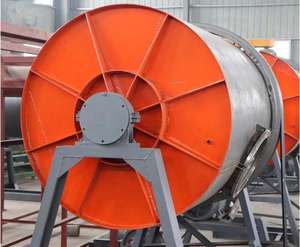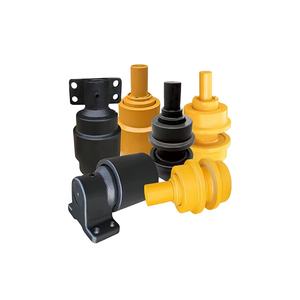Step-by-Step: Checking Hydraulic Oil in Komatsu Excavators
(Step-by-Step: Checking Hydraulic Oil in Komatsu Excavators)
Hydraulic systems are the backbone of Komatsu excavators, ensuring smooth and efficient operation of heavy machinery. Proper maintenance of hydraulic oil is critical to the longevity and performance of these systems. Regular inspection and maintenance of hydraulic oil levels and quality can prevent costly repairs and downtime. This article provides a step-by-step guide to checking hydraulic oil in Komatsu excavators, ensuring optimal performance and reliability.
**Step 1: Prepare the Excavator**
Before beginning the inspection, ensure the excavator is on a level surface and the engine is turned off. This prevents any movement of the machine and ensures accurate readings. Allow the hydraulic system to cool down if the machine has been in operation, as hot oil can expand and give false level readings. Engage the parking brake and lower the bucket or attachment to the ground to stabilize the machine.
**Step 2: Locate the Hydraulic Oil Tank**
The hydraulic oil tank is typically located near the engine compartment or under the cab of the excavator. Refer to the operator’s manual for the exact location, as it may vary depending on the model. Once located, identify the oil level gauge or dipstick, which is used to measure the hydraulic oil level.
**Step 3: Check the Oil Level**
Remove the dipstick or open the oil level gauge cap. Wipe the dipstick clean with a lint-free cloth to remove any residual oil. Reinsert the dipstick fully into the tank, then remove it again to check the oil level. The oil level should be between the minimum and maximum marks on the dipstick. If the oil level is below the minimum mark, additional hydraulic oil will need to be added.
**Step 4: Inspect the Oil Quality**
While checking the oil level, take note of the oil’s appearance and consistency. Hydraulic oil should be clear and free of contaminants. If the oil appears cloudy, milky, or contains particles, it may indicate contamination or degradation. Contaminated oil can damage hydraulic components and reduce system efficiency. In such cases, the oil should be drained and replaced, and the system should be flushed to remove any debris.
**Step 5: Add Hydraulic Oil if Necessary**
If the oil level is low, add the recommended hydraulic oil specified in the operator’s manual. Use a funnel to avoid spills and ensure the oil is poured slowly to prevent air bubbles. Recheck the oil level using the dipstick after adding oil to ensure it reaches the appropriate level. Avoid overfilling, as excess oil can cause pressure buildup and lead to leaks or system damage.
**Step 6: Check for Leaks**
After ensuring the oil level is correct, inspect the hydraulic system for any signs of leaks. Look for oil stains or puddles around the hydraulic hoses, fittings, and cylinders. Leaks can lead to a drop in oil level and pressure, compromising the system’s performance. If a leak is detected, address it immediately by tightening connections or replacing damaged components.
**Step 7: Record the Maintenance**
Document the date, oil level, and any observations made during the inspection. Keeping a maintenance log helps track the condition of the hydraulic system over time and ensures timely servicing. Regular checks and proper record-keeping are essential for maintaining the excavator’s performance and extending its lifespan.
**Step 8: Test the System**
Once the inspection and any necessary adjustments are complete, start the excavator and allow the hydraulic system to operate for a few minutes. Check for any unusual noises or performance issues, which could indicate air in the system or other problems. If everything appears normal, the machine is ready for operation.
**Conclusion**
(Step-by-Step: Checking Hydraulic Oil in Komatsu Excavators)
Checking hydraulic oil in Komatsu excavators is a straightforward yet vital maintenance task that ensures the machine operates efficiently and reliably. By following these steps, operators can maintain proper oil levels, identify potential issues early, and prevent costly repairs. Regular hydraulic oil checks, combined with proper documentation and timely servicing, are key to maximizing the performance and lifespan of Komatsu excavators. Always refer to the operator’s manual for specific guidelines and recommendations tailored to your machine.


